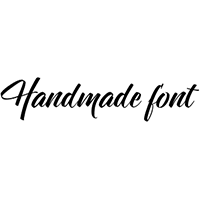ATypI'08 | Jerry Kelly and John Downer on Type Revivals
My computer woes are over, so now I'm scrambling to make up for lost time. I'll start posting my ATypI'08 reports and have them alternate with the other stuff that's been accumulating the past week. Please bear with me while I get up to speed.
Hotel weirdness
My stay at the Rossi Hotel had a few surreal touches. My room was fine, stylishly decorated, albeit a touch on the small side. Some of the staff didn't master English very well, but they all were very friendly and forthcoming.
The first bizarre occurrence was when I tried to log onto the internet late on Thursday night. This made Firefox go frying power cord disaster. ;)
Then, wanting to take a shower the next morning, I quickly considered myself fortunate to be neither claustrophobic nor Bald Extended. A person could seriously get stuck in such a tiny shower cabin with such a narrow door! And although breakfast was included in the room rate, we (the FSI crew, not pluralis majestatis) found out that was only half true. Every morning we asked for the croissant, and every morning we got to hear "No croissant, only toast". Which was served dry with only butter, because any supplement like jam, honey, fruit, juice, et al had to be paid for separately.
Main hall at the Beloselsky-Belozersky Palace © Victor Gaultney
Registration
As usual at the physical registration for the conference we were handed the much anticipated goody bag and T-shirt. Unfortunately the latter only came in large and extra large (Bald Condensed, remember). I saw many attendees who were also quite slim, so I think it wouldn't hurt to have medium sizes in sufficient quantities. Or ask for the size when registering for the event. The goody bag was a really nice red canvas shoulder bag with several handy compartments, but its contents proved to be a bit meagre in comparison to previous years. Highlights were the catalog for the National Student Type Competition Dedicated to the Tercentenary or Russian Civil Type, and a handy red umbrella. See the goodie bag dissected on Fredrik Andersson's Typografism blog which switched to English for the occasion. And the names on the conference tags were set large enough, thus minimizing the risk on "no-I'm-not-staring-at-your-boobs-I'm-trying-to-read-your-name" incidents.
After the aforementioned bad news that Robert Bringhurst nor Erik Spiekermann would be presenting, the conference kicked off in earnest with Jerry Kelly's presentation.
Jerry Kelly presenting at ATypI'08 © Victor Gaultney
Jerry Kelly | Type revivals
Jerry Kelly's first slide "Type Revivals. Where did they come from? Where have they been? Where are they going?" summed up nicely the basic premise of his presentation. Although graphic designers and typographers are familiar with the concept of historical revivals of earlier typefaces, he questioned how well we truly understand this important segment of type design. And an important segment it is, since according to Kelly it may well be that there are more type revivals in use today than original designs. Determining what exactly can be considered a "type revival" is not a question of right and wrong, but a question of semantics.
Kelly proceeded to pinpoint the very first revival. This was not easy, as there is not much documentation to be found in early type literature. A special type made in 1741 – modelled on early calligraphy – can not really be considered a type revival as it is a facsimile of calligraphy. Another candidate is Caslon (late 18th century), which is the typeface that has been the longest in concurrent use. Yet it was not a true type revival neither but merely a resurrection, as it was not redrawn but made from existing punches. Kelly concluded that for a typeface to qualify as an actual revival it must be a newly drawn version based on an old disused font.
The first genuine type revival was designed in the late nineteenth century by William Morris, specifically for his private press editions for Kelmscott Press. Morris pursued the ideal form of a roman type in books printed by Nicolas Jenson around 1470-76. But instead of merely copying Jenson's roman Morris attempted to master its essence. He called the Venetian revival his Golden type. Kelly explained that this very first example reveals the four key elements of a true revival: researching the finest specimens available, using photographic enlargements to appreciate the true forms, seeking the essence of the design, and adapting the design for current use (omitting for example the archaic long 's').
By 1900 Morris' methods were adopted by others, and soon even copies of copies began to emerge. American Type Founders' 1907 Bodoni cut ushered in the golden age of type revivals which lasted from 1915 to 1990. Classic examples are Deberny & Peignot's Garamond (1912–1928), the Bauer revivals, et al. Monotype also had its own revival programme overseen by Stanley Morison from 1922 to 1932. The general consensus back then was that the finest type to base your finest revivals on were Jenson's late fifteenth century romans. Yet Morison didn't share this opinion, as he preferred the first roman cut by Francesco Griffo and used by Aldus Manutius for the publication of an essay by the Italian scholar Pietro Bembo – Bembo.
Yet the search of the purest version of a typeface to work on couldn't prevent errors being made in early revivals. Now and then there were mistakes in the available reference material. Sometimes those sources were copies of copies, or even included the odd character in the wrong font. Kelly showed for example a printed specimen that served as a basis for Monotype's Plantin, and it was obvious that the two lowercase a's were different. According to him Monotype used the wrong 'a' in the referenced original, while Matthew Carter's ITC Galliard which draws on the same source has the correct 'a' shape. The most errors were made in the numerous revivals of Garamond, which led to the peculiar situation that the most faithful one is not even named Garamond, but Granjon. Of course one of the main difficulties is which point size to use as reference, as there are dramatic differences in their design. This can still be seen in the optical sizes of contemporary digitizations.
Kelly called the two most successful revivals Carter's ITC Galliard and Jonathan Hoefler's Requiem, although Kelly considers the latter, being based on calligraphic type, not a revival in the strict sense of the word. After mentioning Epigrammata which he holds in high regard, he concluded that there are still enough interesting models to be discovered to base revivals on. It is inevitable that – beside fine modern designs – there will always be room for good revivals.
Having Jerry Kelly go first was an excellent choice by the conference organisation. The conference theme being "The Old and The New", Kelly set the benchmarks for all consecutive presentations involving type revivals; defining the concept, clarifying the terminology, and grounding it in historical context. He struck exactly the right tone, delivering a thoroughly enjoyable and amply illustrated presentation which was accessible without being dumbed down.
Discussing the ethical aspects of type revivals and the perceived value of type with John Downer (center) and Ken Barber (left) © Victor Gaultney
John Downer | Revivals Revisited
After Jerry Kelly's historical observations on type revivals, it was John Downer's turn to look into the ethical aspects. The subtitle of his presentation – "Type Designers and The Subculture of Freeloading" – immediately set the tone. Downer set out to investigate what is fair game for revivals and what isn't. He referred to the very interesting article he wrote for Emigre to coincide with the release of Tribute by the late Frank Heine. John Downer did some legwork and made some suggestions for Frank Heine as Heine already was very ill when working on Tribute. Although the typeface looks authentic it is not a strict revival. Downer categorizes it more as a caricature, a parody. The source material was very crude with tremendous room for interpretation, so Heine made a humorous take.
John Downer's article Call It What It Is breaks down type revivals in two main categories: designs closely based versus loosely based on existing designs; in other words knocking off versus reviving. Downer's position on the matter is very straightforward: only dead and obsolete typefaces are eligible for revival. What's more, he strongly advocates the protection of intellectual property being extended to at least one generation. For legitimate revivals the designer must get permission when permission is needed.
Downer then proceeded to show examples of strict and loose revivals. His comment about freeloaders being parasites foreshadowed that his presentation would be quite controversial. With regards to extending the protection of intellectual property he proposed a period of 100 years starting from the original release of a type design. His rationale was that 100 years is a nice round number, and he humorously added that anyone who makes 100 is doing very well. Elaborating on his main point Downer explained that generally a type designer creates his first good typeface at 30 years of age, and has had all his children by 50. So by the time the copyright expires those children are at least 80 years old and have fully benefited from the fruit of their parent's labour.
Taking the work of Adrian Frutiger as an example, Downer mentioned the well-known recent case of Microsoft's application for protection of Segoe as original font designs, which was rejected by the European Union trademark and design office because the design looks like an almost direct copy of Frutiger. Who decides if a design resembles an existing one too closely? Indeed it takes a trained eye to distinguish the differences, and we need experts to assist the judges in their decisions. Downer repeated that the original design must be cold to be eligible for revival. If the body is still warm type designers shouldn't touch it.
That's when technical problems arose, as if John Downer were not allowed to reveal any more examples of rip-offs. The carousel of the slide projector he was using for his presentation jammed. During an attempt to get it working again, all the slides suddenly fell out of the carousel, making it virtually impossible to get them in order again in the limited time that was left. As a result the end part of his presentation was very confusing, with slides jumping from one subject to another and back again. He talked about designers in the eighties mimicking Zuzana Licko's bitmap fonts, and rip-offs inspired by Arial, which itself is a clone of Helvetica, thus making those rip-offs copies of copies.
Downer ended his presentation with the (in)famous quote by Frederic W. Goudy: "The old fellows stole all our best ideas" and touched upon the unauthorized language extensions of popular typefaces. His statement "Get permission!" was a not to be misunderstood stab at certain Cyrillic and Greek extensions popping up without any communication with the original designer. Indeed those are a shorter bridge than Arabic or Hebrew language extensions, as many characteristics and even complete characters in Cyrillic and Greek are (nearly) identical to their Latin counterparts.
Because John Downer misunderstood the question I asked him during his presentation, I asked again what were his thoughts on type designers appropriating not the design but specific features of popular typefaces. I explained that when I originally saw the extended ligature sets of new type designs by Kris Sowersby and Dino dos Santos, I was taken aback by the similarity with the extended ligatures set in the wildly popular Mrs Eaves. After overcoming my initial shock, I remember wondering if Licko could actually claim intellectual property on the concept of specific letter combinations as ligatures. Downer's stance was clear and consistent with his presentation – he was adamant that those designers should at least ask permission to Licko and acknowledge her as being the originator of this specific feature.
More ATypI'08
ATypI'08 | The Old and The New
ATypI'08 | Nick Shinn Unveils his Scotch Modern
Header imageAttendance at the Beloselsky-Belozersky Palace © Ilya Ruderman




































 闽公网安备35010202000240号
闽公网安备35010202000240号